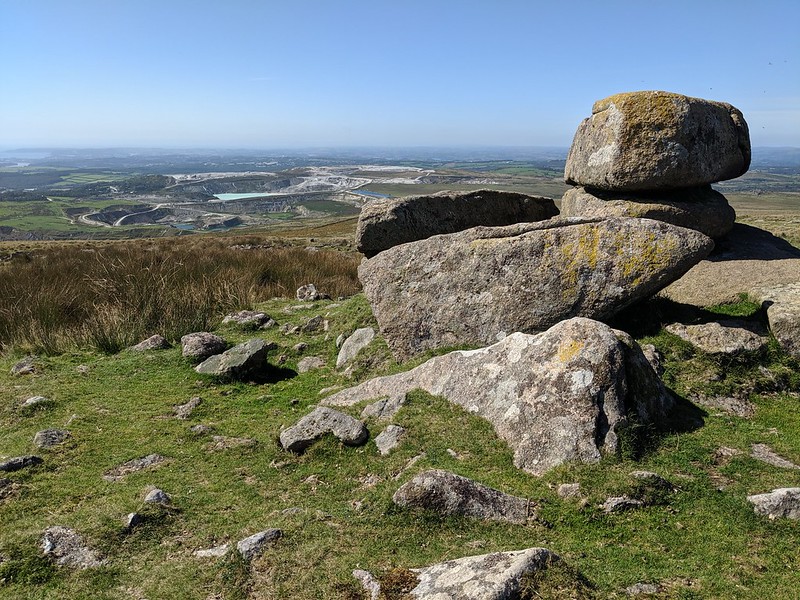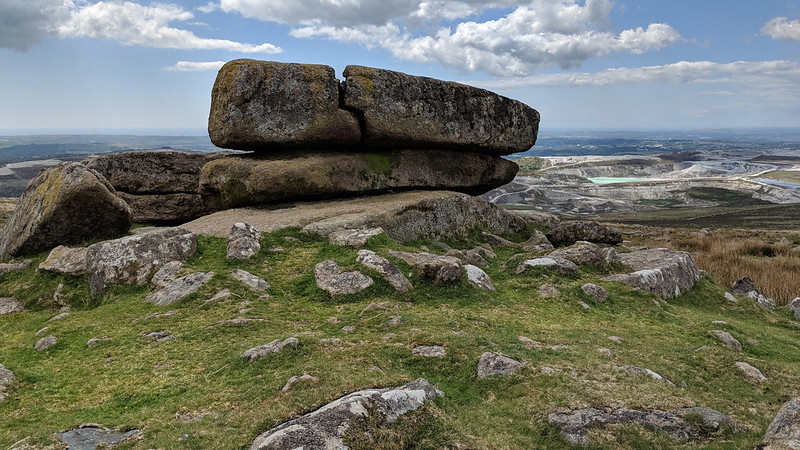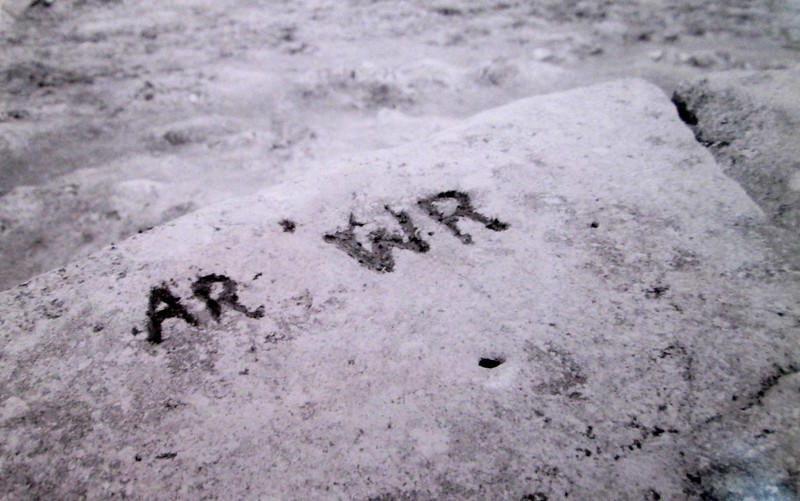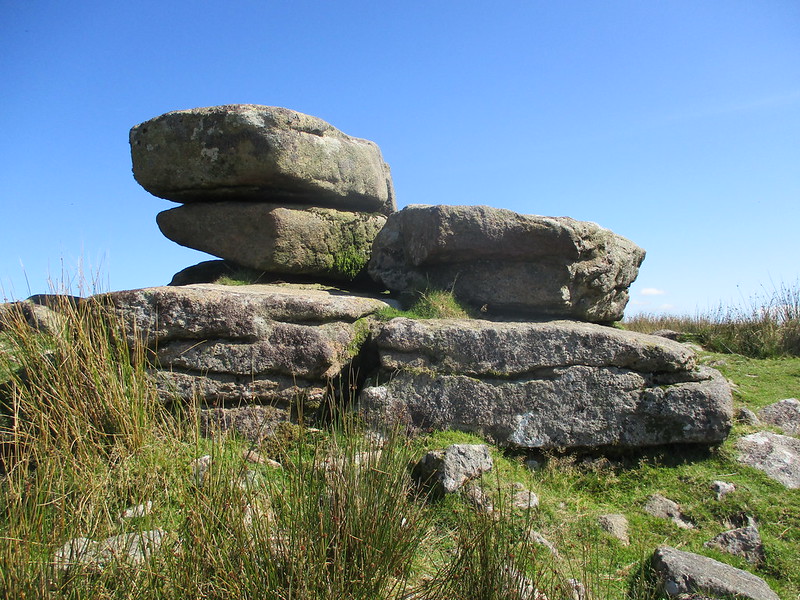TORS OF DARTMOOR
a database of both lesser- & well-known rocks and outcrops
Shell TopShiel Top, Shell Tor, Penshiel
 It seems that Samuel Rowe in 1848 is the first to describe Shell Top as a tor. In his book 'A Perambulation of Dartmoor' reprinted for a new generation in 1985, he describes on page 173 an excursion from the cairn at Penn Beacon: "From this cairn a trackline proceeds directly along the ridge; this we shall follow in the direction of the neighbouring eminence, which we shall observe rising above Pen Beacon to the north. As we proceed, we find the trackline which probably here served as a boundary, on its approach to Shell Top, diverging from the tor on the summit, a little to the east. Here, as on Whittaburrow, a cairn has been built round the tor, which is of small size, and consists of layers of native rock, rising like shelves above the aggregation of loose stones. Shell Top or to adopt the more euphonious appellation of the moormen, Penshiel, rises to a height of sixteen hundred feet above the sea level and is one hundred and thirty feet higher than Pen Beacon."  This is a comprehensive account that is largely overlooked by authors writing much later such as Crossing (1909) and Breton (1931) who readily interchange the word 'Top' with 'Tor'. In the time since Rowe's account the stature of the cairn at Shell Top has reduced and is now much less obvious and grass covered. Shell Top is a small yet distinctive outcrop that is set high on the top of the western end of Broadall Gulf with Penn Beacon away to the south. As Rowe explains it is one of the highest points on the southern moor, and it has a thrilling vista from the summit that is perfectly summed up by Eric Hemery: "Views to the north-west are tremendous. At one glance the entire china-clay industry of south-west England can be seen: Shaugh Moor, Lee Moor, Cholwich Town Waste, Heddon Down and Cornwall's St Austell Moor. In the north, the vista of valley-folds and ranges of hills and tors is itself worth the long but steady climb to the summit."  The summit rock is of particular interest as Hemery advises that not only is there a small socket hole but also "some carved initials" upon it. He speculates that a danger flag once flew from the spot in war time to warn of firing. In a letter to Dartmoor Magazine (Winter 1993) Tom Greeves provides a thorough assessment of the various inscriptions here: "On the upper surface of its western half near its northern edge if read from the south are the initials AR in letters 11.5 cms high and WR in letters 16cms high. These letters have serifed feet" (see b/w photo). He goes on to describe at the west end of the same block the apparent name of 'JOHN' after which there is a gap and then a 'D' or 'O'. Tom offers more interpretations too many to include here but concludes that "The style of the larger lettering, which was obviously carefully executed, suggest a date in the 18th Century or early 19th Century. It would be interesting to know who was responsible and why." Whatever their origin the rocks that contain these letters are blessed with breathless panoramic views that are simply too good to miss. There is also an incised cross at the top of the south face of the outcrop that was first noted by Dave Brewer, but its purpose remains unknown. 
| ||||||||||||||||||||||||||||